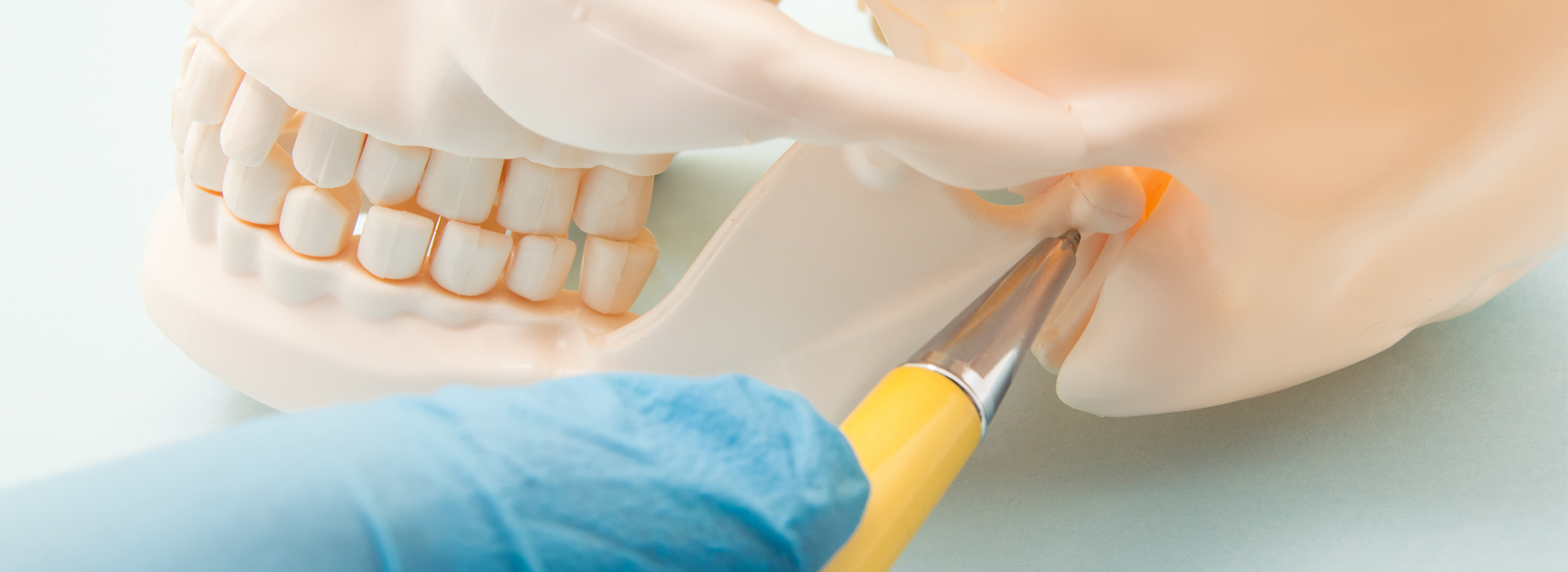

Temporomandibular joint (TMJ) disorders are a common source of chronic face and jaw discomfort, affecting millions of people across the United States. These conditions can range from a brief, self-limited ache to persistent dysfunction that interferes with eating, speaking, and sleep. Understanding how the jaw is meant to move—and why it sometimes doesn't—is the first step toward effective, conservative care.
The temporomandibular joints sit just in front of each ear and link the lower jaw (mandible) to the skull. Each joint contains a small cushioning disc and is supported by muscles, ligaments, and teeth that work together to open, close, and move the jaw side to side. Because the TMJ performs both hinge and sliding motions, it is one of the most mechanically complex joints in the body.
When any component of this system—muscles, the disc, joint surfaces, or the bite—becomes strained, symptoms can follow. Causes are seldom single-factor: repetitive clenching or grinding (bruxism), direct trauma, inflammatory conditions like arthritis, and even prolonged stress can alter muscle tone and joint mechanics. Small changes in how teeth contact each other can also shift the forces transmitted to the joint.
Because the jaw impacts hearing, neck posture, and facial muscles, dysfunction can produce a surprising variety of complaints. That complexity is why a careful, stepwise approach is often best: treating symptoms and restoring balanced function while avoiding overly aggressive interventions early on.
TMJ disorders present with a spectrum of symptoms that vary in intensity and type. Pain or tenderness around the jaw joints and temples is the most common complaint, often accompanied by difficulty or fatigue when chewing. Many patients describe noises—clicking, popping, or grating—during jaw movement, and some experience episodes where the jaw feels stuck or locked.
Because the muscles and nerves in the jaw area are closely connected to the ears and neck, patients may also notice related issues such as ear fullness, ringing (tinnitus), headaches, or neck pain. Symptoms can fluctuate with activity, stress, or changes in sleep and daytime habits, making it important to observe patterns that may point to contributing behaviors like nightly grinding or daytime clenching.
Recognizing symptom severity and persistence is key. Short-lived discomfort that improves with rest and simple self-care often responds well to conservative measures. If pain, joint noises, or movement limitations continue or worsen, a professional evaluation helps identify the underlying pattern and tailor treatment appropriately.
A thorough evaluation begins with a focused history and hands-on examination. The clinician will ask about symptom onset, daily habits such as chewing or clenching, sleep patterns, and any history of dental work or facial trauma. During the exam, jaw motion, bite alignment, joint sounds, muscle tenderness, and range of motion are assessed to build a clear clinical picture.
Imaging and additional testing are used selectively. Standard dental X-rays may reveal joint degeneration or dental contributors to altered bite forces, while advanced imaging—such as cone beam CT or MRI—can be invaluable when disc position or soft-tissue detail is in question. Referral to a physician, pain specialist, or physical therapist may be recommended when symptoms suggest overlapping medical or musculoskeletal conditions.
Diagnosis is rarely based on a single finding. Instead, clinicians integrate clinical signs, reported symptoms, and diagnostic imaging when needed to classify the disorder and prioritize treatment steps that are conservative, evidence-informed, and individualized for each patient.
Most patients begin with conservative, reversible care aimed at reducing pain and improving function. Practical self-care steps—short-term soft diet, avoiding extreme jaw movements, mindful chewing, and using heat or ice intermittently—can significantly reduce strain. Stress-reduction techniques, improved sleep hygiene, and behavioral approaches to reduce daytime clenching often contribute to meaningful relief.
Oral appliances, such as a well-fitted stabilization splint or night guard, are commonly used to decrease excessive forces on teeth and joints and to interrupt harmful grinding patterns. Physical therapy and guided jaw exercises can restore muscle balance and movement control. When appropriate, short courses of medications—over-the-counter anti-inflammatory agents or prescribed muscle relaxants—may be used under professional supervision to manage flare-ups.
For patients who do not respond to conservative measures, targeted procedures can be considered. Injections (such as corticosteroids or neuromodulators) and botulinum toxin have roles in select cases to reduce inflammation or excessive muscle activity. Occlusal adjustments, orthodontics, or restorative dental work can address bite-related contributors when clinically indicated. Surgery is reserved for persistent, structural joint problems that have failed comprehensive conservative care and is approached cautiously within a multidisciplinary framework.
Throughout treatment, the emphasis is on choosing the least invasive, most predictable option that addresses the specific factors driving each patient’s symptoms. Collaboration among dentists, physical therapists, and medical colleagues often produces the best long-term outcomes.
Long-term success commonly depends on a combination of professional care and patient-led strategies. Simple daily habits—avoiding gum chewing and hard foods, practicing jaw awareness to reduce clenching, and using prescribed exercises—can help maintain gains made during active treatment. Regular follow-up allows the care team to adjust therapies and monitor progress.
Monitoring sleep quality and managing stress are central to prevention and relapse avoidance. Many patients find that integrating relaxation practices, biofeedback, or behavioral techniques reduces muscle tension that otherwise perpetuates joint problems. If bruxism during sleep is a factor, an appliance or other interventions can protect teeth and reduce joint load.
When symptoms change or new concerns arise, timely reassessment is important to catch evolving issues before they become entrenched. Our goal is to equip patients with clear strategies for symptom control while preserving natural jaw function and comfort over the long term.
At Silk Dental Delray Beach (formerly Marc Bilodeau DMD), our team emphasizes a calm, conservative approach that prioritizes function and comfort. If you or a family member are experiencing persistent jaw pain, noises, or limitations in movement, please contact us for more information about evaluation and care options. We’re here to help you understand your condition and find a thoughtful path toward lasting relief.
Quick Links